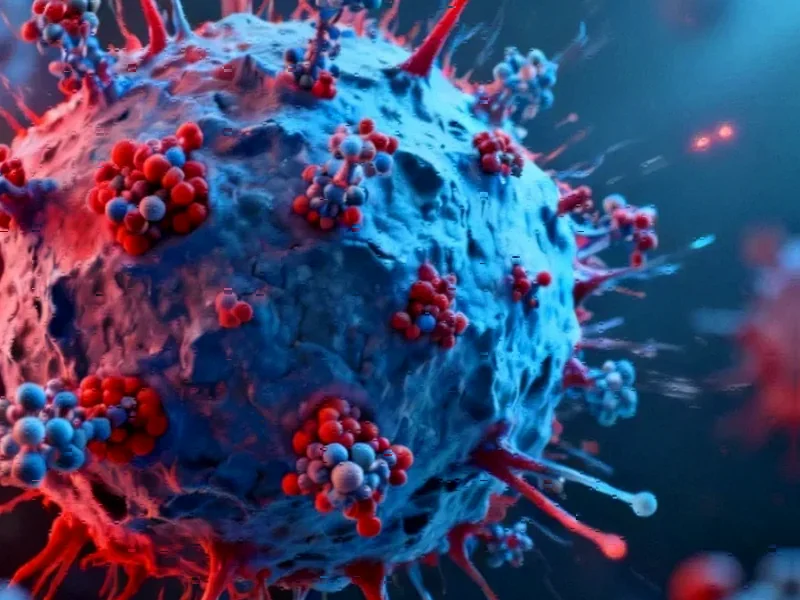Breakthrough in Cancer Drug Resistance Research
Scientific reports indicate that two novel curcumin analogs, PGV-5 and HGV-5, demonstrate significant potential in overcoming multidrug-resistant cancer mechanisms. According to the research published in Scientific Reports, these compounds exhibit enhanced binding affinity to P-glycoprotein compared to curcumin, potentially addressing one of the major challenges in cancer treatment—drug resistance.
Table of Contents
Promising Drug-Like Properties
Sources indicate both compounds satisfy multiple established drug-likeness criteria, including Lipinski’s Rule of Five, Pfizer guidelines, GSK rules, and the Golden Triangle Rule. Analysis reveals PGV-5 and HGV-5 scored 1 under Lipinski’s Rule, confirming adherence to all thresholds for oral bioavailability. The report states that both compounds exhibit Quantitative Estimate of Drug-likeness scores exceeding 0.6, indicating favorable similarity to marketed oral drugs.
Researchers note the compounds demonstrate similar physicochemical properties with slight variations in solubility and distribution characteristics. PGV-5 shows a logS of -4.734 while HGV-5 registers -4.564, with logD values of 2.943 and 2.81 respectively. Analysts suggest these minor differences could influence their pharmacological behavior despite their structural similarity—PGV-5 contains a cyclopentanone core while HGV-5 features a cyclohexanone core.
Comprehensive ADMET Profiling
According to reports, preliminary ADMET studies provide crucial insights into the compounds’ pharmacokinetic and toxicological properties. Both compounds exhibit high plasma protein binding exceeding 90%, which researchers suggest could be addressed through formulation strategies such as nanoparticle encapsulation or liposomal delivery systems.
The study states that both analogs demonstrated good Caco-2 permeability but low MDCK permeability, coupled with high P-glycoprotein inhibitory activity. This combination, analysts suggest, could help overcome resistance mechanisms by increasing intracellular concentrations of anticancer treatments.
Safety and Toxicity Assessment
Acute toxicity testing revealed differentiated safety profiles between the two compounds. Reports indicate HGV-5 demonstrated superior safety, with all test animals surviving at 2000 mg/kg body weight, while PGV-5 showed one mortality at the same dosage level. Consequently, researchers classified PGV-5 in GHS class 4 and HGV-5 in GHS class 5 based on their toxicity profiles.
Microscopic examination revealed some organ-specific effects, with HGV-5 test groups showing irregular red hue in hearts and PGV-5 groups demonstrating interstitial alveolar edema in lungs. However, the report states no significant behavioral changes, respiratory effects, or other overt toxicity signs were observed in treated animals compared to controls.
Molecular Mechanism Insights
Molecular docking studies revealed both compounds exhibit stronger binding affinities to P-glycoprotein than curcumin, with PGV-5 at -8.60 kJ/mol and HGV-5 at -8.83 kJ/mol compared to curcumin’s -7.52 kJ/mol. Researchers found both analogs specifically attach to the Phe983 amino acid residue in a critical region of the P-gp protein involved in substrate binding and transport., according to related coverage
The formation of π-π interactions with Phe983 residue, analysts suggest, enhances the blocking ability of efflux transporters and could increase intracellular concentrations of chemotherapeutic agents. This mechanism represents a potential breakthrough in addressing multidrug resistance in cancer treatment.
Future Development Potential
Despite some pharmacokinetic challenges, including rapid elimination and high plasma protein binding, researchers indicate both compounds hold significant therapeutic potential. The report suggests various formulation strategies could address these limitations, including sustained-release systems, targeted delivery mechanisms, and encapsulation techniques.
Researchers conclude that with appropriate development strategies focusing on formulation optimization and targeted delivery, both PGV-5 and HGV-5 represent promising candidates for further development as therapeutics against multidrug-resistant cancers. The comprehensive profiling provides a solid foundation for subsequent in vitro and in vivo studies to validate these preliminary findings.
Related Articles You May Find Interesting
- Government Shutdown’s Ripple Effects: Treasury Yields Dip Amid Economic Data Vac
- UK Fiscal Deficit Widens Beyond Projections, Pressuring Chancellor’s Economic St
- Automakers Scramble for Rare Earth Alternatives as China Tightens Export Control
- NTT DATA Expands Global Insurance Technology Footprint with Londonderry’s Alchem
- R150 Million Smart Utilities Partnership Targets Underserved South African Busin
References & Further Reading
This article draws from multiple authoritative sources. For more information, please consult:
- http://en.wikipedia.org/wiki/Ångström
- http://en.wikipedia.org/wiki/Substrate_(chemistry)
- http://en.wikipedia.org/wiki/Efflux_(microbiology)
- http://en.wikipedia.org/wiki/Partition_coefficient
- http://en.wikipedia.org/wiki/Caco-2
This article aggregates information from publicly available sources. All trademarks and copyrights belong to their respective owners.
Note: Featured image is for illustrative purposes only and does not represent any specific product, service, or entity mentioned in this article.
